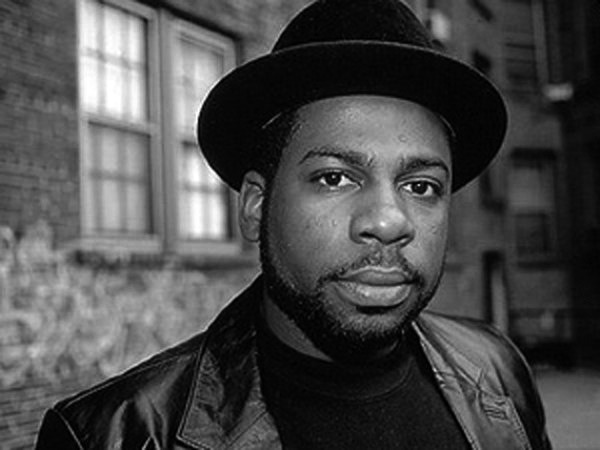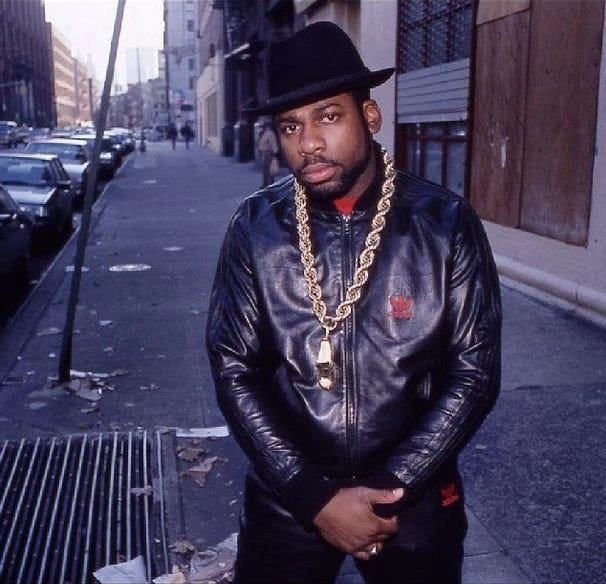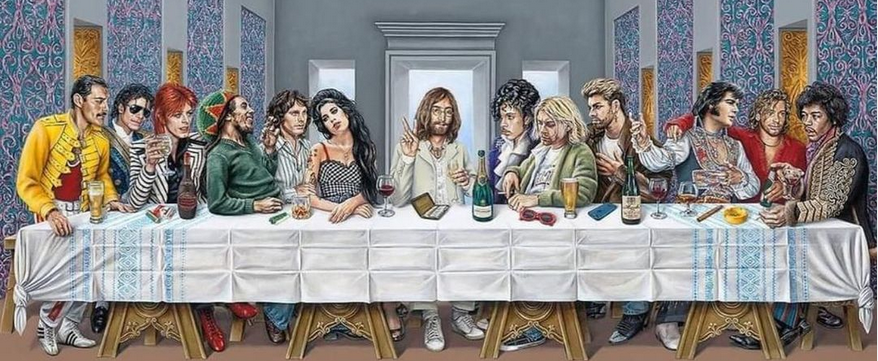
Jam Master Jay, born Jason William Mizell on January 21, 1965, in Brooklyn, New York, was a pivotal figure in hip hop and a trailblazer who helped shape the sound and culture of the genre. Best known as the DJ of the groundbreaking group Run-DMC, Mizell’s artistry and innovation in DJing earned him a revered place in music history.
Under the stage name Jam Master Jay, he played an instrumental role in popularizing hip hop, propelling it into mainstream culture and expanding its reach. His influence and contributions went beyond the beats and scratches of turntables; he was a mentor, a producer, and a community leader. Tragically, his life was cut short when he was murdered in his recording studio in Queens, New York, on October 30, 2002. His untimely death sent shockwaves through the music industry and left a lasting impact on hip hop culture.
Early Life and Musical Beginnings
Jason William Mizell grew up in the Queens borough of New York City, where he developed a love for music at an early age. His mother, Connie Mizell, was an active member of the church, where Jason would occasionally play music. His family encouraged his interest, and by the age of three, he was already playing trumpet, a skill he picked up quickly and continued to develop over the years. He later learned to play other instruments, including the bass and drums, and was musically inclined enough to play with various neighborhood bands.
Mizell was introduced to the emerging hip hop scene in the 1970s. Hip hop was still an underground genre at the time, centered around neighborhoods in the Bronx and Harlem. DJing became a significant influence for Mizell, who was particularly drawn to the role of the DJ as the one who controlled the beats and energy at a party. His fascination led him to save up money and invest in his first turntable. Inspired by early pioneers like DJ Kool Herc, Grandmaster Flash, and Grand Wizard Theodore, Mizell practiced relentlessly and honed his turntable skills.
In the late 1970s and early 1980s, Mizell became a fixture in the Queens hip hop scene, spinning records at local parties and block events. His adept mixing skills, musical ear, and ability to hype up a crowd quickly made him a local favorite. Through his musical connections, he met two young men from Hollis, Queens, Joseph “Run” Simmons and Darryl “DMC” McDaniels, who were looking for a DJ to complete their musical ensemble. The trio quickly bonded, and Mizell soon adopted the stage name Jam Master Jay.
Rise with Run-DMC
Run-DMC officially formed in 1983, and from the start, they were unlike any other hip hop group of the time. While the genre’s early sounds were rooted in funk and disco samples, Run-DMC took a different approach, creating a grittier, harder sound that was driven by rock influences and innovative production. Jam Master Jay played a crucial role in crafting this sound, incorporating drum machines, aggressive beats, and complex scratches. The trio’s self-titled debut album, Run-DMC, was released in 1984, and Jam Master Jay’s skills as a DJ were front and center. His scratching techniques and rhythmic prowess elevated their sound, setting a new standard for hip hop music.
Their song “Sucker M.C.’s,” featured on the debut album, exemplified the group’s raw, minimalist style, with Mizell’s beats driving the rhythm and enhancing the bold, direct lyrics of Simmons and McDaniels. The album achieved significant commercial success, earning both critical acclaim and widespread attention. It marked the beginning of hip hop’s entry into mainstream pop culture, and Jam Master Jay’s artistry was key to the album’s appeal.
Following the success of their first album, Run-DMC released their sophomore project, King of Rock (1985). The album was an even greater success, with the title track “King of Rock” helping the group cement their place as hip hop royalty. Run-DMC became the first hip hop group to receive heavy airplay on MTV, breaking new ground for the genre. Jam Master Jay’s DJ skills continued to evolve, incorporating complex scratches and rhythmic patterns that became a blueprint for DJs across the globe. His unique style and his energetic, animated presence made him an irreplaceable part of Run-DMC’s image.
Breaking Boundaries with “Walk This Way”
Run-DMC’s biggest breakthrough came in 1986 with their third album, Raising Hell, which featured the groundbreaking single “Walk This Way.” The song, a collaboration with rock band Aerosmith, was a reimagining of Aerosmith’s original 1975 hit. This track, masterminded by producer Rick Rubin and endorsed by Jam Master Jay, was a fusion of rock and hip hop that was virtually unheard of at the time. The collaboration helped to tear down the genre barriers that had previously separated hip hop from rock. Mizell’s sharp, commanding DJ skills held the track together, providing a powerful rhythmic foundation.
.
.
“Walk This Way” was a cultural phenomenon, reaching number four on the Billboard Hot 100 and becoming one of MTV’s most popular music videos. The success of this single helped Raising Hell become the first hip hop album to go multi-platinum, marking a historic moment for the genre. It also opened doors for other hip hop artists, proving that the genre could achieve massive mainstream success. Jam Master Jay’s innovative DJ techniques and production choices were integral to Run-DMC’s success and the song’s widespread appeal.
Jam Master Jay’s Influence on Hip Hop Culture
Jam Master Jay was more than a musician; he was an icon who embodied the creative, rebellious spirit of hip hop. His distinctive look—black Adidas tracksuits, wide-brimmed hats, and chunky gold chains—helped define hip hop fashion. Along with Run and DMC, he popularized Adidas as a brand in hip hop culture, eventually leading to one of the first major endorsement deals between a sports brand and a hip hop group. This partnership further elevated Run-DMC’s status and helped establish hip hop’s commercial potential.
Beyond his contributions to Run-DMC, Mizell was dedicated to mentoring the next generation of hip hop artists. In the 1990s, he founded the Scratch DJ Academy, a school designed to teach the art of DJing to aspiring artists. He also created the record label Jam Master Jay Records, signing and developing young talent, including the successful rapper 50 Cent. Mizell’s commitment to teaching and nurturing young artists underscored his desire to give back to the hip hop community, ensuring that his legacy would live on through the talents he helped cultivate.
Jam Master Jay’s music and mentorship left a lasting impact on hip hop. He inspired countless DJs and producers to push the boundaries of the genre, advancing the technical aspects of DJing and encouraging a culture of creativity and innovation.
Murder and Legacy
On October 30, 2002, Jam Master Jay was shot and killed in his Queens recording studio. His murder sent shockwaves through the hip hop community and beyond, as fans and fellow musicians mourned the loss of one of the genre’s most beloved figures. The circumstances surrounding his death were shrouded in mystery for years, with various theories and rumors circulating in the media. Despite extensive investigations, it took nearly two decades before significant legal developments occurred in the case.
.

.
In August 2020, federal prosecutors charged two suspects in connection with Mizell’s murder, alleging that the motive was related to a drug deal. The news reignited public interest in the case, and the charges offered some closure to those who had long sought justice for Mizell. The tragedy of Jam Master Jay’s death underscored the violence that has, at times, plagued the hip hop industry, and highlighted the need for a safer environment for artists.
Jam Master Jay’s legacy endures through his profound influence on music and culture. Run-DMC’s groundbreaking achievements paved the way for future hip hop artists, and Jam Master Jay’s contributions helped shape the genre’s sound and aesthetic. His work continues to inspire DJs, producers, and musicians who recognize him as a pioneering figure who helped elevate hip hop from a local phenomenon to a global movement.
Honors and Tributes
Over the years, Jam Master Jay has been honored in various ways. Run-DMC was inducted into the Rock and Roll Hall of Fame in 2009, an honor that cemented their place in music history as one of the most influential hip hop groups of all time. In 2019, a street in Hollis, Queens, was renamed “Run-DMC JMJ Way” in his honor, a testament to his lasting impact on the community he called home.
The Jam Master Jay Foundation for Music was established to provide educational resources and opportunities for youth interested in pursuing careers in music. Through this foundation, Mizell’s commitment to education and mentorship lives on, helping to empower a new generation of musicians.
Conclusion
Jam Master Jay was a visionary who helped define and elevate hip hop, turning it into a cultural force that transcended music. His work with Run-DMC broke down barriers, and his influence can still be felt in the music industry today. From his innovative DJ techniques to his role as a mentor and community leader, Mizell’s contributions to hip hop were profound and enduring.
Though his life was tragically cut short, his legacy lives on, inspiring fans and artists worldwide to pursue their creative passions with the same fearless dedication that he demonstrated throughout his life. Jam Master Jay’s memory is a reminder of hip hop’s transformative power and the role of pioneers like him in shaping a movement that continues to captivate and unite people across the globe.
Check out Jam Master Jay on Amazon.
If you found this interesting please share it with your friends and family, and why not check out our article on Musicians who were murdered.
.


Pingback: The Legacy of Fallen Hip-Hop Icons - Dead Musicians